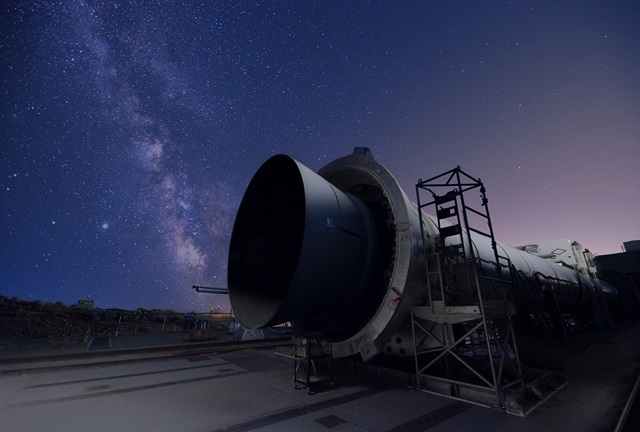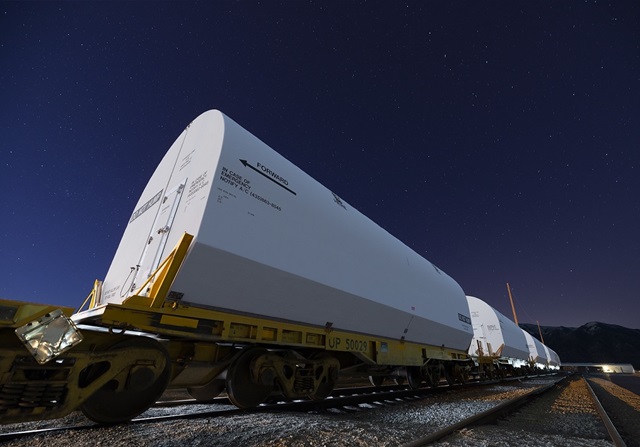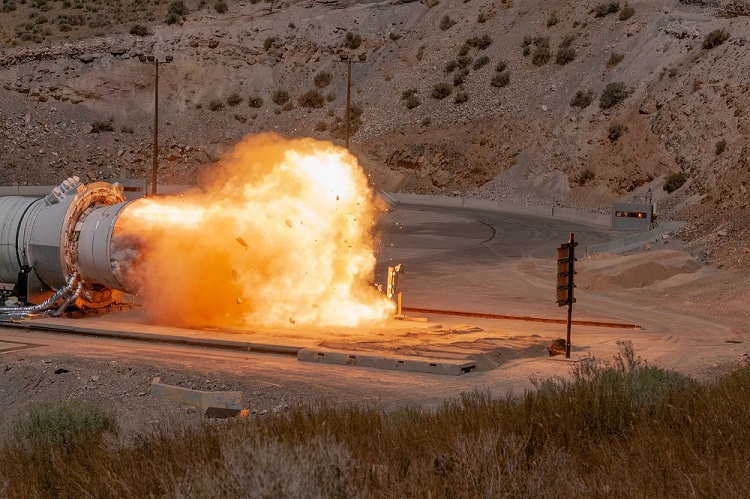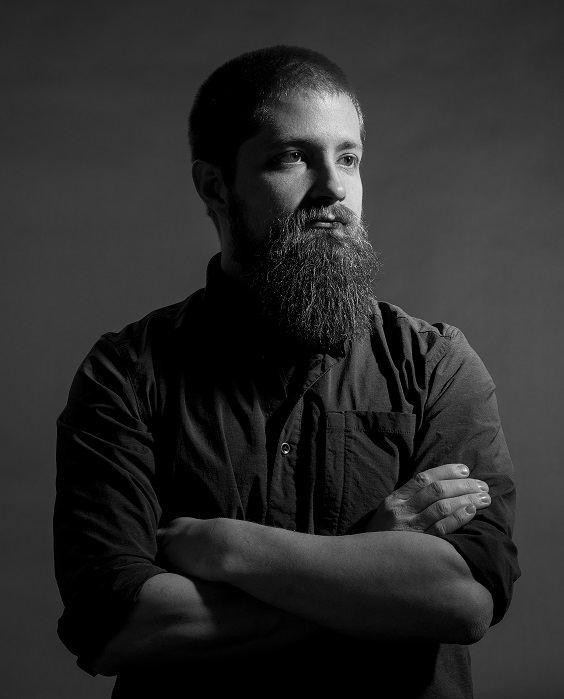By Scott Mohrman

It would be a once-in-a-lifetime shot.
Outdoor photographers know that Utah summers offer the best chance to spot the Milky Way. This year, the opportunity happened to align with the Flight Support Booster (FSB-1) motor test on September 2, 2020 — a test of the Northrop Grumman-manufactured solid rocket motor that will help lift NASA’s Space Launch System rocket on Artemis missions to the moon. I envisioned a shot of the motor against the Milky Way, bringing together the important work we are doing here with where we are headed, and knew I had to pursue it.
I’m pretty familiar with photographing the rocket industry — before joining Northrop Grumman several years ago I worked in New Orleans, Louisiana, NASA’s manufacturing hub for the Apollo and Space Shuttle Programs — but astrophotography like this was new to me.
The railcar shot in early June was my first attempt at capturing a night sky for Northrop Grumman. The first Artemis booster segments were being loaded for shipment from Northern Utah to Kennedy Space Center, Florida, and I knew the contrast of the white protective shell against the sky would be similar to my planned shot of the FSB-1 motor. When I saw the result, I was committed. I got straight to work, collaborating with our team on the logistics and, of course, continuously checking the stars.

Technology really helped me. There are apps that show where the stars will be at different dates and times, as well as how light pollution will affect visibility. My projections showed that in the weeks leading up to the test the Milky Way would directly align with the motor as it sat on the hillside of our Promontory facility, and the new moon on August 18 would reduce the light pollution to provide the darkest sky. Now, I just hoped the clouds would cooperate.
Around 11 p.m. on Aug. 20, 2020, the house — a shelter that covers the rocket motor prior to a ground static fire test — was rolled back and I snapped a series of photos of the exposed 154-foot-long rocket motor. In the background, the Milky Way glittered against the dark skyline.

Capturing anything in the dark is a challenge, let alone a motor of that size, so some creative photographic techniques were needed — although, for the record, the sky really did look like that. New moons are often thought of as “no moons” because the moon is not visible to us, so I lit the motor to look like moonlight was falling on it, highlighting different parts of the motor. Then, I overlaid them on a base photo, so the final product is actually a composition of a series of shots.
Photo opportunities like this don’t happen every day. I am usually capturing shots of our products for program milestones or contracts, or photographing the assembly and disassembly of motors to help engineers better understand test preparation and outcomes — and of course, ground test firings are a blast, literally. In my time working for the company I’ve taken some unique, behind-the-scenes shots and explored new possibilities and perspectives enabled by remote camera set-ups and sound trigger photography.

The FSB-1 motor shots are hopefully just the beginning for me. I have my own sights set on photographing the first human flight to Mars, our generation’s Apollo mission, and something about my current career path tells me I might just be on track.
About Scott: Scott Mohrman is a Northrop Grumman photographer based in Promontory, Utah. Scott enjoys visual media and is especially passionate about black and white photographs. He enjoys exploring his creative license both in his work and personal photography, capturing the Utah landscape and its people, and looks forward to many more amazing rocket shots.
Explore Northrop Grumman career opportunities in Space and Communications, and start Defining Possible today.
Return to Life at Northrop Grumman home page.